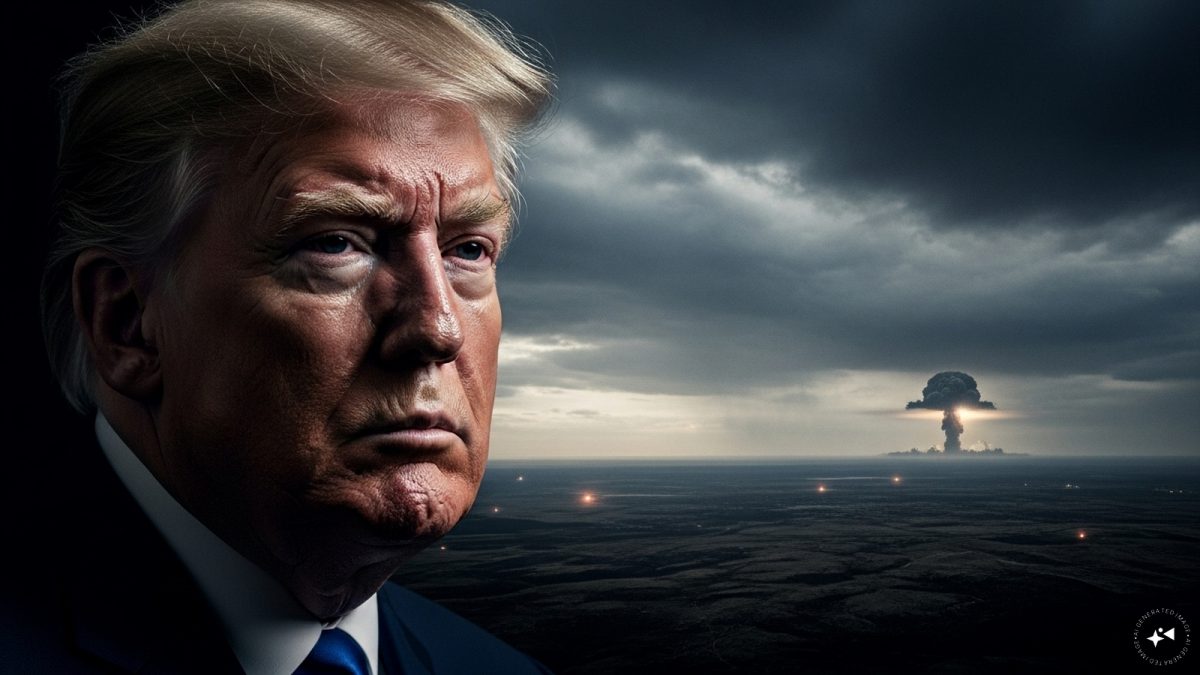In a move that has stunned the international community and raised fears of a new nuclear arms race, US President Donald Trump has ordered the immediate resumption of nuclear weapons testing, the first such decision in over three decades.
His announcement, made on Truth Social just hours before a meeting with Chinese President Xi Jinping in Busan, South Korea, signals a seismic recalibration of Washington’s nuclear doctrine and threatens to dismantle the fragile architecture of restraint that has underpinned international test-ban efforts since the end of the Cold War.
Defending his move, Trump invoked parallel developments in Russia and China, asserting that the United States “cannot afford to fall behind” in strategic capability. “The United States has more nuclear weapons than any other country,” he said in a statement that highlighted both his administration’s assertive pursuit of nuclear parity and its willingness to abandon decades-old norms in the name of deterrence.
“Because of other countries’ testing programs, I have instructed the Department of War to start testing our Nuclear Weapons on an equal basis. That process will begin immediately.”
The decision ends a 33-year hiatus since the US last conducted a full-scale nuclear test in 1992, although subcritical experiments have continued since then. Trump, who said he “hated” the destructive nature of nuclear arms but saw “no choice,” insisted the order was necessary to maintain parity as Russia and China expand their arsenals.
Moscow’s provocations and Beijing’s warning
Trump’s announcement followed a series of high-profile weapons tests by Russia. President Vladimir Putin recently unveiled new strategic weapons including the Poseidon nuclear-powered underwater drone and the Burevestnik cruise missile both capable of carrying nuclear payloads. He also confirmed that Russia’s Sarmat intercontinental ballistic missile, dubbed “Satan 2,” is nearing deployment.
Although the Kremlin later clarified that these systems were not live nuclear warhead tests, Moscow warned it would “act accordingly” if the US departed from the informal moratorium. “If someone departs from the moratorium, Russia will act accordingly,” Kremlin spokesman Dmitry Peskov said.
Impact Shorts
More ShortsChina, meanwhile, urged the US to “earnestly abide” by its obligations under the Comprehensive Nuclear-Test-Ban Treaty (CTBT). “We hope the United States will uphold global strategic balance and stability,” said Chinese Foreign Ministry spokesperson Guo Jiakun.
A high-stakes escalation
Analysts warn that Trump’s decision risks triggering a global domino effect. “A US nuclear test could set off an uncontrolled chain reaction,” experts at the Bulletin of Atomic Scientists warned earlier this year. Such a move, they warned, could prompt other major powers — including Russia, China and potentially North Korea to resume their own testing programs, eroding decades of arms control efforts and destabilising global security.
The US and Russia together hold nearly 90% of the world’s nuclear warheads, roughly 11,000 in total, according to the Stockholm International Peace Research Institute (SIPRI). Both nations are bound by the New START treaty, which limits the number of deployed long-range nuclear weapons, but the agreement expires in February 2026.
If Washington resumes live nuclear detonations, it would mark a formal break from the de facto moratorium observed by all major nuclear powers except North Korea since the late 1990s. The US halted testing in 1992 after conducting 1,030 tests since the first “Trinity” detonation in 1945. Any resumption would likely occur at the Nevada National Security Site, though experts say it could take years to prepare facilities for such operations.
The return of nuclear brinkmanship
Trump’s order follows months of escalating nuclear rhetoric between Washington and Moscow amid the prolonged war in Ukraine. Putin’s repeated atomic threats and the US debate over supplying Kyiv with long-range Tomahawk missiles have strained already fragile relations.
While the Kremlin sees its nuclear posturing as leverage for diplomatic concessions in Ukraine, Washington’s response marks a shift from cautious deterrence to open reassertion of military power. “It’s all hands on deck for nuclear power,” Treasury Secretary Scott Bessent said, noting the US must “catch up” with China in nuclear development.
For now, Trump has downplayed global concerns, saying the move was “appropriate” given the actions of others. But diplomats and experts fear it could usher in a dangerous new phase of nuclear competition, one reminiscent of the Cold War, yet more unpredictable in a multipolar world.
Meanwhile, US Vice President JD Vance said that testing of the US nuclear arsenal would ensure it actually “functions properly,” but did not elaborate on what type of tests President Donald Trump had ordered.
“It’s an important part of American national security to make sure that this nuclear arsenal we have actually functions properly, and that’s part of a testing regime,” Vance told reporters at the White House when asked about Trump’s social media post on ordering nuclear tests.
He added that the president’s statement “speaks for itself.”
With inputs from agencies
)